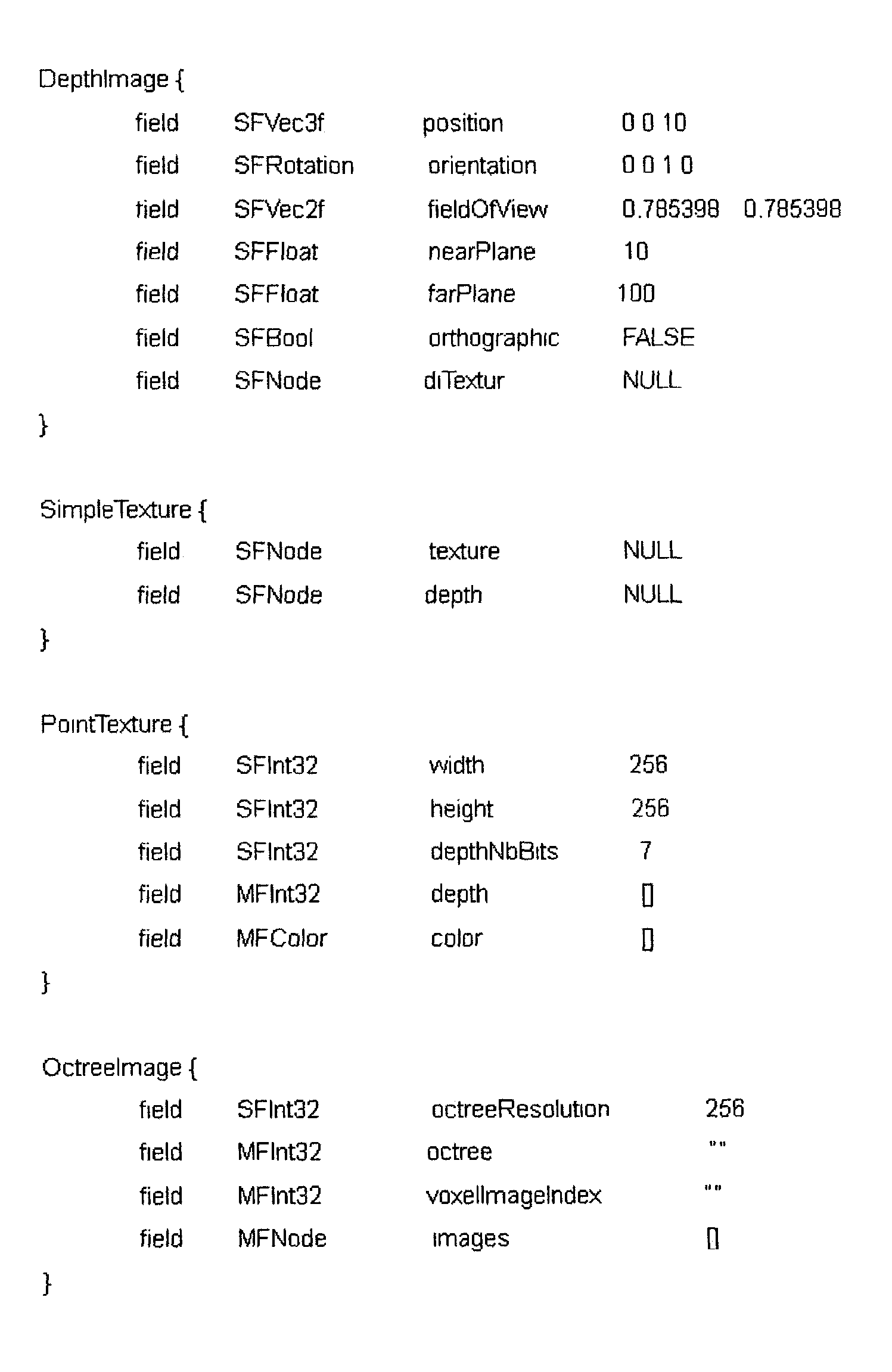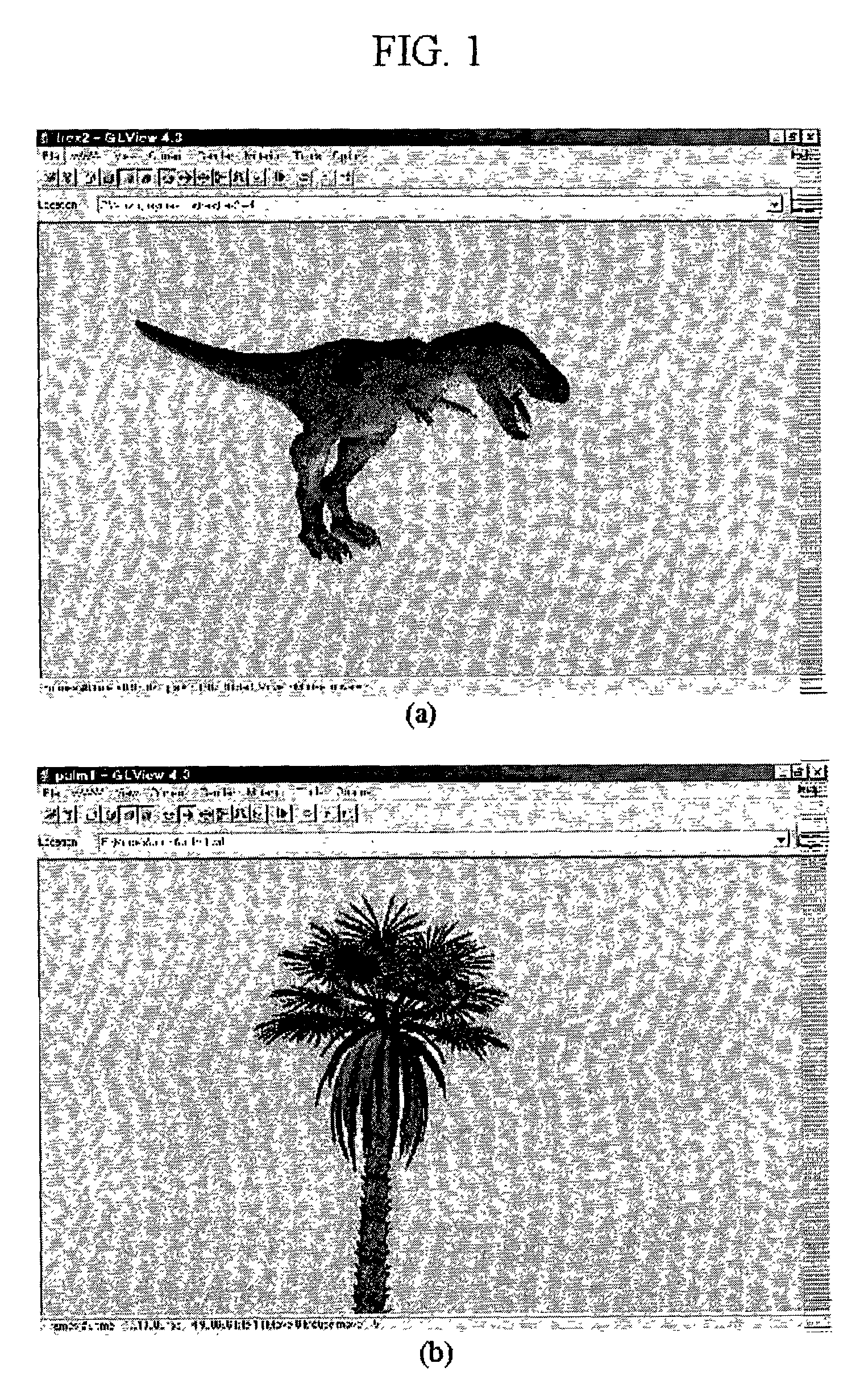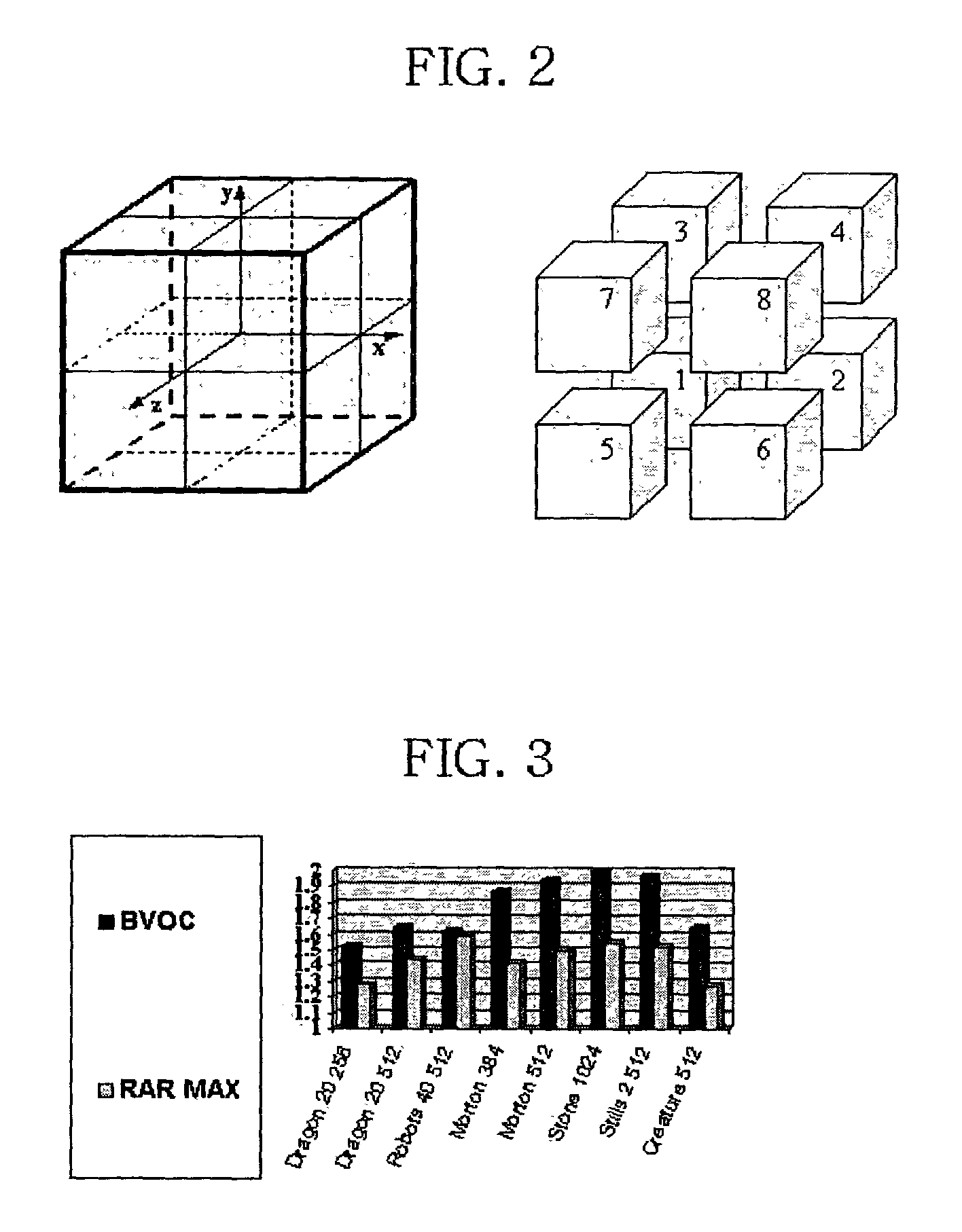Node structure for representing 3-dimensional objects using depth image
a technology of depth image and node structure, applied in the field of node structure for representing depth imagebased 3dimensional (3d) objects, can solve the problems of difficulty in constructing polygonal models for real-world objects, affecting the accuracy of depth image, and requiring a lot of effort by experts
- Summary
- Abstract
- Description
- Claims
- Application Information
AI Technical Summary
Benefits of technology
Problems solved by technology
Method used
Image
Examples
Embodiment Construction
[0048]This application claims the benefits of U.S. Provisional Applications listed below, which are incorporated herein by reference in their entireties.
[0049].ISO / IEC JTC 1 / SC 29 / WG 11 Coding of Moving Pictures and Audio
[0050]1. Introduction
[0051]In this document, the result of the core experiment on Image-based Rendering, AFX A8.3, is reported. This core experiment is for image-based rendering technology that uses textures with depth information. Also, based on the experiments after 57th MPEG meeting and discussions during AFX AdHoc Group meeting in October, few changes made to the node specification are presented.
[0052]2. Experimental Results
[0053]2.1. Test Models
[0054]For still objects
[0055]DepthImage node with SimpleTexture[0056]Dog[0057]Tirannosaurus Rex (DepthImage, using about 20 cameras)[0058]Terrasque (a monster) (DepthImage, about 20 cameras)[0059]ChumSungDae (DepthImage, scanned data)[0060]Palmtree (DepthImage, 20 cameras)[0061]DepthImage node with LayeredTexture[0062]An...
PUM
 Login to View More
Login to View More Abstract
Description
Claims
Application Information
 Login to View More
Login to View More - R&D
- Intellectual Property
- Life Sciences
- Materials
- Tech Scout
- Unparalleled Data Quality
- Higher Quality Content
- 60% Fewer Hallucinations
Browse by: Latest US Patents, China's latest patents, Technical Efficacy Thesaurus, Application Domain, Technology Topic, Popular Technical Reports.
© 2025 PatSnap. All rights reserved.Legal|Privacy policy|Modern Slavery Act Transparency Statement|Sitemap|About US| Contact US: help@patsnap.com



